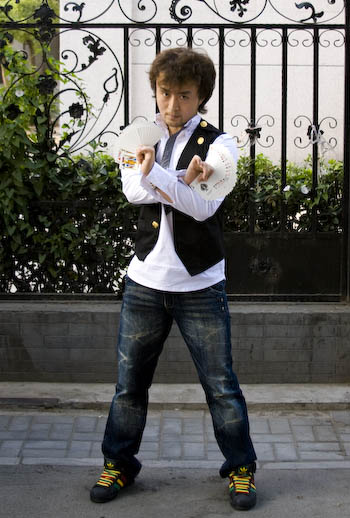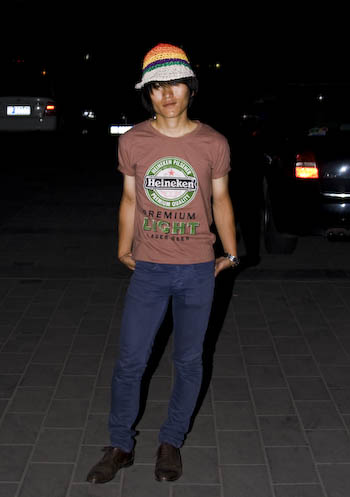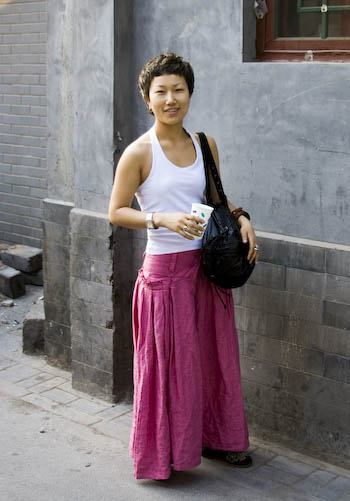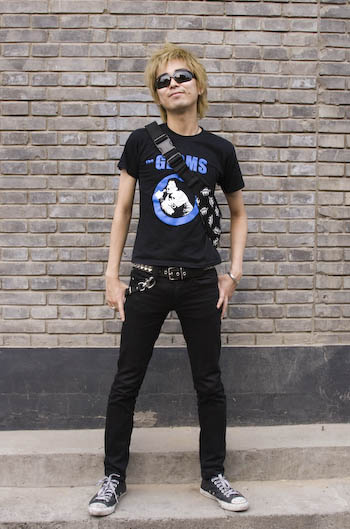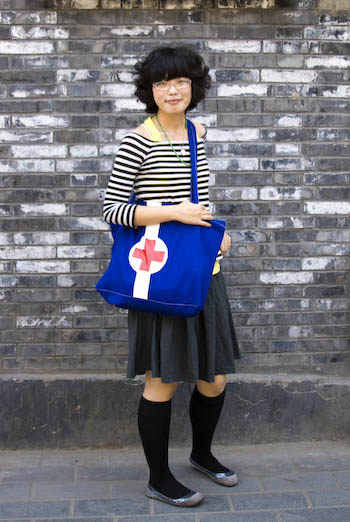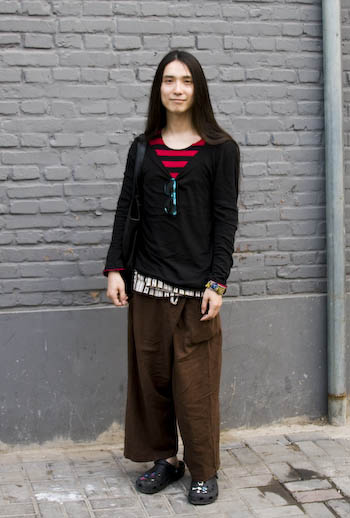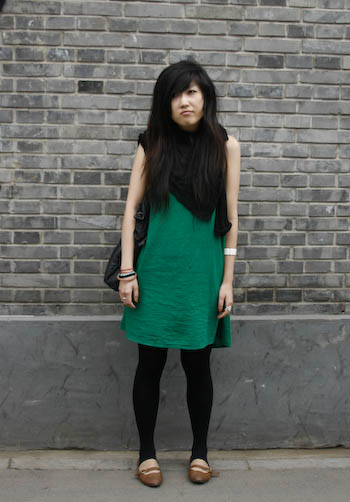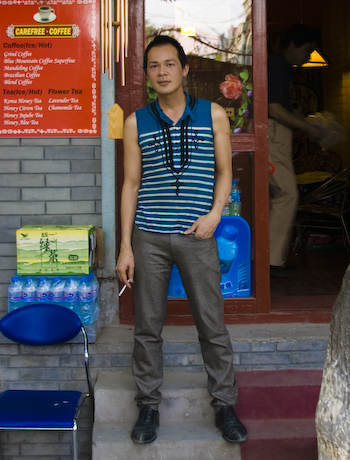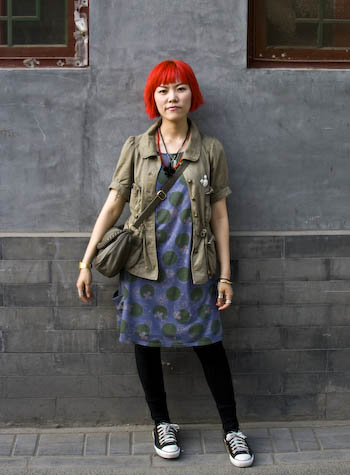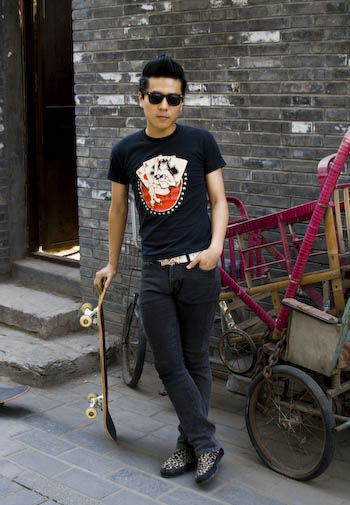The August issue of The Beijinger is out. For this Olympics issue, my Trouser Press column makes recommendations for attire to be worn while attending events and parties. Since you can see the final version of Trouser Press in the magazine, I decided to put the first version I wrote here on Stylites. This earlier version contains several, admittedly puerile, political comments that were deemed unfit to appear in print at this time. So to see the finished version, please read The Beijinger.
Looking Good as a Spectator
The games are about competition, patriotism and respecting local culture. One cannot be overcautious in dressing, as every message will be scrutinized. Key times are games, parties, and brawls, sometimes all happening concurrently. The “to-die-for†piece is a lightweight chain mail vest, ostensibly celebrating the five rings, but really shielding those from countries that best the host in any event.
Main goals at all times remain safety and health. Toward these ends, clothing choices should offer protection from the heat and other spectators. For outdoor events, thin fabrics promote ventilation, while long sleeves stop sunburn. Denim is far too dense, while wearers of dark colors tend to bake in the sun. Though the air will be pristine, pure white should still be avoided as it is liable to be a victim of a neighbor’s Tsingtao. Sweat and catapulting saliva from other cheering enthusiasts are perennial perils for chic clothes at proletarian sporting events. Still, resist the temptation to wear tracksuits and team jerseys; you didn’t make the cut the first time.
Current indications are that much of the rabble will be exiled along with stray cats and lunatics, so it might be a cleaner affair than expected and a chance to dress-up. The average spectator won’t increase his medal count but he can trump other nationalities in elegance. Sartorial superiority is a refuge for those from countries with poor results; it won’t be hard to look better than citizens of the first, second or third ranking countries in the overall medal count.
Outfits geared toward parties make sense. For most sports fans, it will be night after night, raising glasses to celebrate or commiserate after hearing results. This is the time to wear a Stetson, straw hat, or a Panama. Spectators or suede bucks are perfect and linen, seersucker or even madras trousers will exhibit flare. An ascot is never wrong at a sporting event.
In the competitive climate of the bar or the stands, many might choose national dress or a look symbolizing support for their county’s team. A quirky approach is a patriotic tie. For example, citizens of the big stripy nation can opt for a star spangled banner tie from Vineyard Vines, available on their website (USD 75). Ties can also perform as nooses when things go badly for the homeland. Possibly more subtle approaches would be choosing national brands that design effective stylish sporty wear. This means Brits in Burberry, French in Lacoste, Americans in Ralph Lauren, Canadians in Dsquared, Japanese in Y3, and Italians in Dolce and Gabbana. Germans and Austrians can wear Lederhosen.
Dressing by color, it might be difficult to distinguish Americans, French, Russians, Brits, and others who could all safety go for blue trousers, a white shirt, and red shoes or hat. This would make them look marginally better than locals, struggling with red and yellow. Copying the style of a head of state is another way to back the national team. In this case, Moroccans and Afghans will be the dandies, North Koreans and Libyans the romancers, and Iranians will suffocate in the heat with their always-fastened collar button.
